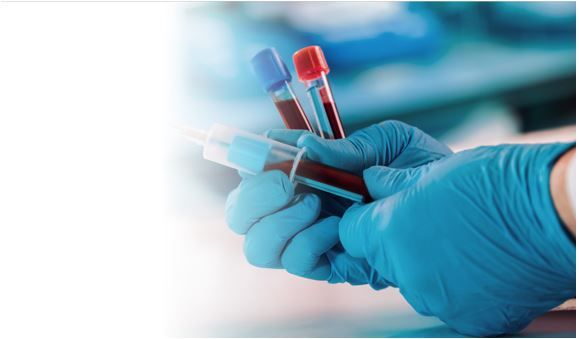- Clinical Technology
- Adult Immunization
- Hepatology
- Pediatric Immunization
- Screening
- Psychiatry
- Allergy
- Women's Health
- Cardiology
- Pediatrics
- Dermatology
- Endocrinology
- Pain Management
- Gastroenterology
- Infectious Disease
- Obesity Medicine
- Rheumatology
- Nephrology
- Neurology
- Pulmonology
Novel Liquid Biopsy for NASH is Highly Accurate, Sensitive, Specific, and Reliable
Clinical research into treatments for NASH is hampered by the need for invasive biopsies but a new blood test using 2 biomarkers could be a game changer, say study authors.
©angellodeco/adobe stock

A novel liquid biopsy test for non-alcoholic steatohepatitis (NASH) has proven highly accurate, sensitive, and specific for both NASH and liver fibrosis, according to research published in the journal Gut. The development could mark the first noninvasive method to reliably identify staging for both diseases without use of liver biopsy.
"This blood test will allow [us] to define the real prevalence of NASH in large and small populations, including children and adolescents, avoiding the need for invasive liver biopsy," said Professor Geltrude Mingrone, from King’s College London, in a King’s College statement. Importantly, it will also allow [us] to monitor the efficacy of NASH treatments over time, reducing screen failures and helping generate better drugs."
There are no approved medications for NASH largely, the investigators note, because there are no accurate, reliable noninvasive tests available to screen research participants. Between 65% and 73% of patients enrolled in clinical trials who underwent liver biopsy do not meet eligibility criteria, the authors write. "Hence, prebiopsy strategies targeting the right candidates and reducing the number of screen failures are necessary," they add.
Current plasma biomarkers used for NASH diagnosis have recognized low sensitivity (range 62-66%) and specificity (78-82%) and none are able to predict NASH severity, Mingrone et al point out, and so, NASH and fibrosis staging.
Mingrone and colleagues stated this obstacle to research progress as a primary reason for their study.
The researchers first identified 2 monocyte proteins, PLIN2 and RAB14, able to predict the presence and severity of NASH and liver fibrosis, respectively.
Study participants were recruited from 2 studies to create a discovery cohort and a validation cohort. Patients for the discovery cohort (n=100) were recruited from the Bariatric Surgery Versus Non-alcoholic Steato-hepatitis trial and for the validation cohort (n =150) participants with biopsy-confirmed non-alcoholic fatty liver or NASH with or without fibrosis were recruited from the from the Liquid Biopsy for NASH and Liver Fibrosis trial.
The presence or absence of NASH and NASH stages was predicted using neural network classifiers and the investigators used logistic bootstrap-based regression to assess accuracy of fibrosis prediction.
NASH
The algorithm for NASH that combined the biomarker PLIN2 with waist circumference, triglyceride, alanine aminotransferase (ALT) and presence/absence of diabetes as covariates had an accuracy of 93% in the discovery cohort and of 92% in the validation cohort. Sensitivity and specificity were 95% and 90% in the discovery cohort and 88% and 100% in the validation cohort, respectively.
Liver fibrosis
The algorithm using RAB14 combined with age, waist circumference, HDL-C, plasma glucose and ALT levels as covariates to predict the presence of liver fibrosis yielded an area under the receiver operating characteristic of 95.9% (confidence interval [CI] 87.9% - 100%) in the discovery cohort and 99.3% (CI 98.1% to 100%) in the validation cohort, respectively.
Accuracy was 99.25%, sensitivity 100% and specificity 95.8% in the discovery cohort and 97.6%, 99% and 89.6% in the validation cohort.
Superiority demonstrated
Mingrone et al found RAB14 superior to FIB14, the currently used biomarker, to predict presence of liver fibrosis and also superior to non-alcoholic fatty liver disease fibrosis score and aspartate aminotransferase (AST)-to-platelet ratio. Further they report the performance of the RAB14 algorithm in diagnosing liver fibrosis and states was comparable to that of ultrasound two-dimensional shear wave elastography.
Both the PLIN2- and RAB14-based liquid biopsies can provide rapid and cost-effective testing, allowing earlier detection, intervention, and monitoring of NASH and liver fibrosis, the authors write. Mingrone and colleagues add that the streamlined noninvasive testing will improve capacity for researchers to study the diseases and their progression and to assess treatment effects.
Reference: Angelini G, Panunzi S, Castagneto-Gissey L, et al. Accurate liquid biopsy for the diagnosis of non-alcoholic steatohepatitis and liver fibrosis. Gut. 2022;1-12. doi:10.1136/gutjnl-2022-327498
